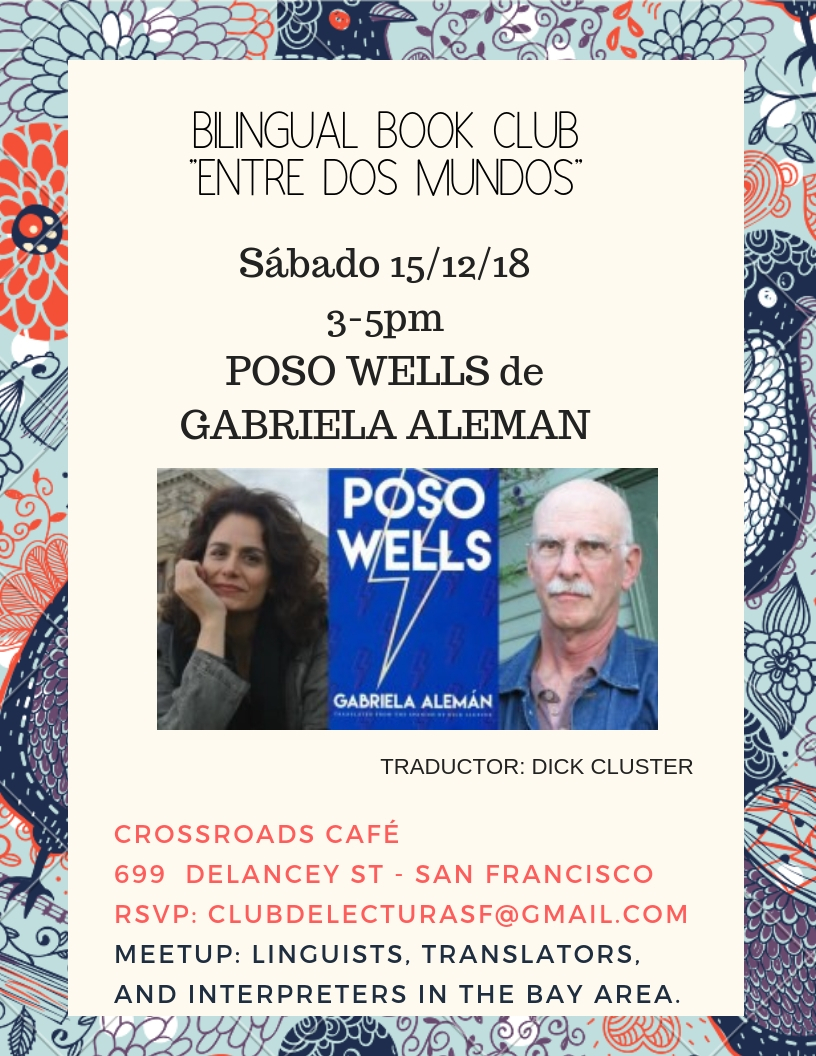During 2017 and early 2018, I took on one of the most challenging, yet rewarding projects in my 12-year translation career: I translated a nonfiction environmental book by American author Deborah Cramer, The Narrow Edge: A Tiny Bird, an Ancient Crab and An Epic Journey, into Spanish. This experience took me through such a fascinating journey that I wanted to share it with anyone willing to listen. So at the 59th ATA Annual Conference in New Orleans I presented a session focused on some of my scientific and poetic challenges as an environmental translator, together with solutions and take-home lessons. Two months later, I was invited to re-present it at my local chapter, the Northern California Translators Association. Here are some highlights.
This book tells the story of the annual migration of a shorebird called the red knot. The author follows them from the most Southern tip of Patagonia all the way up to the Arctic tundra, describing their environmental stressors and meeting people dedicated to protect the birds. I used their journey as the compass in my session, taking the audience through a remarkable 10,000-mile migration, one of the longest in the animal kingdom.
My first big translation challenge in this journey was also the most pervasive one in the book: how to translate the name of each species of birds mentioned? All animal species have two names: a standard scientific name in Latin, used by scientists globally, and a common one. In languages other than English, species’ common names tend to vary greatly within languages. In Spanish, spoken in 21 countries, one bird can have ten different names, often conflicting with each other. Names usually refer to the birds’ colors and reflect local people’s understanding—things that vary depending on where one is based. To make matters worse, in migratory birds, their feathers change color with the seasons. For example, red knots are called playeros árticos [Arctic shorebirds] in Chile, where the book begins, because they come from the Arctic, but also because “Arctic” evokes the greyish white feathers they have during the time they spend there (See image below). When six months later they hop to the Argentine Patagonia, the book’s second stopover, they’re in a different season, have brown and reddish plumage and are called playeros rojizos [reddish shorebirds]. This extreme variation gets repeated with almost every bird the book mentions—and it mentions at least 217!
Same bird; different plumage, different season and different name: A breeding bird at the top, and non-breeding bird at the bottom. Looking like this, Chileans call it “playero ártico” (bottom), while Argentineans call it “playero rojizo” (top). Photo reproduced with the permission of the Western Hemisphere Shorebird Reserve Network (WHSRN) Executive Office.
So what to do in translation? Let’s see what I could NOT do:
I couldn’t use one regional variant or change the variants around: it would create confusion in a wider readership.
I couldn’t add a translator’s footnote enumerating other variants: it would distract the reader’s attention and interrupt the book’s literary flow.
I couldn’t use the birds’ scientific name: the book’s audience, both in its source and target versions, is a lay reader interested in environmental topics, not a scientist. A name in Latin would distance the reader and prevent them from making an emotional connection with the birds, something a good environmental nonfiction book should attempt to do—harness the power of emotional, poetic language to create awareness around species conservation and help bring about socio-political change.
After some deliberation I held with the author, the proofreaders and other interested parties, we decided to go for a creative solution. When Cramer follows the birds in Chile, I used their Chilean names, honoring their feathers’ color and their season. When they hop over to Argentina, I added a phrase like “where the Argentines call them ‘playeros rojizos’”, again true to their colors and season. Along with the author, the book’s scientific proofreader and the publisher, I helped write an introduction to the book explaining these decisions. We also included a multilingual glossary of bird names at the end, containing some of their regional variants in Spanish.
A second challenge was dealing with archaic, historical language in my source text. While in Patagonia, Cramer ponders the birds’ evolution and refers to Darwin’s explorations and observations there, citing paragraphs from his Voyage of the Beagle, Autobiography and On the Origins of Species. These source texts dated from mid 1800s, and added a notable old English flavor, which I wanted to preserve in my target language. I tried my best, but the feel of Darwin’s 1800s style was painfully missing in my translation. While researching, I discovered that some early 20th century Spanish translations of Darwin’s writings were in the public domain. I searched for and incorporated the corresponding quotes, which did have an old Spanish flavor, and added a footnote crediting the version and translator. When another piece of writing from the 15th and 16th century appeared in my source text, I did a bit of digging for old expressions and spellings in a diachronic Spanish language corpus (see image below. And if you’re interested in knowing more about corpuses and how they can help translators, you can watch my webinar here). By means of compensation, I added an old spelling here, an old word there, and hopefully conveyed the writing style of old.
Diachronic corpus search results, showing the concordances of the word “estima” in old Spanish, sorted by year of publication. By clicking on each line, you can read the whole context of the word and its bibliographical details. Source: www.http://web.frl.es/CNDHE (Corpus del Nuevo Diccionario Histórico del Español). If you’re interested in knowing more about corpus, you can watch my webinar.
Another challenge was the meticulous specificity with which Cramer describes the animal and bird behavior she observes first hand. Not being a biologist or having made these observations myself, I felt I needed to “see” what she saw before attempting to translate. I used the advanced search in Google to look for videos, and after a bit of digging, I found YouTube videos of every animal behavior she described, like Magellanic plovers spinning and pecking, mullet running and dolphin “strand-feeding” on them; and blue crab busting out of their shells, to name a few (See video below).
This is one of the YouTube videos that showed me first-hand animal behavior. Reproduced here with the video creator’s permission, Patricia González.
After the birds depart Patagonia, many of them travel nonstop to Delaware Bay (USA), flying at least 6,000 miles in six to eight days without stopping to rest or feed. They gather here in huge numbers to voraciously eat a prehistoric animal’s eggs: the horseshoe crab. The chapter Cramer dedicates to horseshoe crabs, which she calls Blue Bloods after the animal’s blood color, was the one that took me the longest to research, translate and edit. She embarks—and I along with her—upon a centennial journey of fishing exploitation, blood therapy history, intravenous drugs and nuclear medicine. As it turns out, horseshoe crabs are just as essential to migratory shorebirds’ survival as they are to our health (See image below).
Horseshoe crabs in Jamaica Bay, NY, during my research explorations. Horseshoe crabs are caught to extract their blue blood for its clotting agent, LAL. The LAL test has become the standard to test for fatal bacterial contamination in most intravenous devices and IV substances for human use. If you’re mesmerized by these creatures, you may want to know that they were an essential help to create the COVID-19 vaccines in record time.
On the next stop in our journey, I encountered a few sociopolitical challenges in translation. Cramer is on a helicopter with an ornithologist surveying for birds at the US-Mexican border. While aloft, she describes how the US Border Patrol is looking for “walkers... following the many curves of the Rio Grande”. Firstly, keeping the tone of “walkers” to refer to people crossing the border on foot was a challenge for me knowing the sociopolitical connotations this entails in the United States. Secondly, Rio Grande posed an additional problem—this is the name the river is given here, but not in Mexico, where its official name is Río Bravo. Considering the Spanish book was going to be read both in Mexico and potentially in the US by Spanish-speaking readers, I ended up using “Río Bravo” first, with the addition of “which in the United States goes by Río Grande”.
Politics permeated my source text in yet another way—is the Americas one or more continents? The word “América” in Spanish may be politically controversial to those born and raised in Latin America. To them, this word means the Americas, not just the US. What’s more, it’s also thought of as a single continent extending from Ushuaia all the way to Alaska, when in English this is understood as two continents: North and South America. So when Cramer writes: “Red knots speak to us of distant realms, uniting us along a line that stretches the entire edge of continents,” I was torn. In a Northern hemisphere’s worldview, red knots flying from the Arctic to the Chilean Patagonia unite two continents, while in my Latin American readership’s worldview they unite one continent. Once again, geographical borders are not equivalent, but rather fuzzy, and source and target readerships’ expectations differ greatly. I ultimately decided to go for “one single continent” leveraging the author’s message that these migratory birds know no political boundaries and unite us all in their flight.
Apart from all these technical, sociopolitical challenges, the book author made poetic, creative use of the language. As an example, let me include a pun that caused me a translation headache. Cramer is exploring the Canadian Arctic looking for red knots in their breeding grounds. One of the scientists she travels with sees a breeding red knot and writes: “I was amazed how difficult it was to follow the knot; it blended in very well with the rocks. I lost track of it over a ridge. I sat for a while hoping to spot it again, but unfortunately did (k)not.” Any ideas how you’d translate this into your languages?
All in all, translating this environmental nonfiction book was a like microcosm of the practice of translation. It required me to wear several hats simultaneously. I needed my science hat, as I researched, studied and consulted experts and highly-specialized glossaries and dictionaries. I needed my literary hat while conveying the author’s worldview, poetics and writing style, and capturing a lay readership’s interest in the story. I also needed my cultural broker’s hat, bridging sociopolitical differences and uniting a varied readership that spans as wide as the birds’ annual migration. Come to think of it, wearing multiple hats simultaneously is part and parcel of every translator’s daily work. I strongly believe that the key to a well-done job is to know when and how to move in and out of these different roles and to reflect on why.
Presenting a talk about this topic at the December 2018 General Meeting for the Northern California Translators Association.
References
Cramer, Deborah. The Narrow Edge: A Tiny Bird, An Ancient Crab and an Epic Journey. New Haven-London: Yale University Press, 2015.
Cramer, Deborah. Volando a orillas del mar: El viaje épico de un ave playera que une continentes. Buenos Aires: Vázquez Mazzini Editores, 2018.







